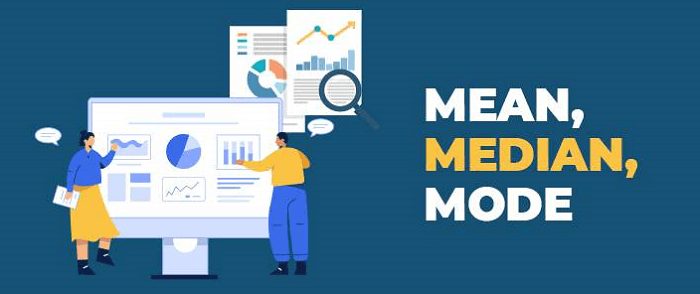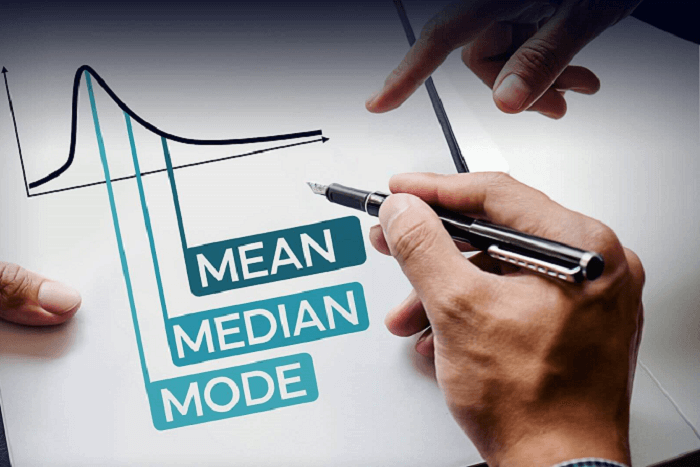Difference Between Mean Median and ModeThe three significant tendency measures in statistics are median, mean, and mode. When describing a data set, we always point out the center location. The central propensity measure is the term used to describe it. We deal with statistics every day. 
Our bank statements, cellphone and utility bills, and stories in the media and newspapers all include them. There is an endless stock of them, and they are everywhere. The challenge is identifying critical data characteristics by considering merely a subset of its representations. It is accomplished by utilizing averages or measures of center trends, such as mean, median, and mode. Describe Mean
Most individuals learned to mean as the standard in middle school math. The mean is calculated by adding up all the values in a group and dividing the outcome by the total. The population is a collection of values represented mathematically as X1,..., Xn. The median value is beneficial. It gives the characteristics of the group. Recognizing that the mean is a condensed representation of the population and not an independent item is crucial. In actuality, anything might have a value that equals the mean. Mean is split into
Describe the Median
Often, the median is a better indicator of the typical group member. If all values are considered and listed in ascending order, the median will be the number in the center of the list. Each person in the group receives the median. The value distribution suggests that the mean may not be close to any group member's quality. The mean is also sensitive to skewing; the mean can be considerably changed by even a single result that stands out from the rest of the group. The median provides a member of the center group without the skew effect introduced by outliers. A normal distribution's median value serves as an appropriate population sample. Describe the Mode
The element of the category that is most frequently encountered is the mode. It makes no difference which value is most common; the mode is always the most enormous or diminutive in the group. Because they are often the least relevant, the bulk of these three median metrics is also the least employed. Sometimes, though, it may be helpful. If your data is accurate and consistent, the median, mean, and mode will all be the same. The Usefulness of Mean, Mode, and Median
Measures of the central tendency within a statistical distribution include the mean, median, and mode. The median is the middle point of a value distribution among situations, and there are equally as many cases above and below it. The median, unaffected by extreme values, may be more beneficial than the mean when the data collection contains extreme values. The mode is advantageous when a data collection's most typical item characteristic or value is required. Utilize the Mean, Median, and Mode
Empirical Relation Between Mean Median and ModeThe connection may be divided into four separate cases.
Difference between Mean Median and Mode
ConclusionBecause of the differences in the Mean, Median, and Mode discussed above, we usually wish to determine a dataset's central tendency. The mean, median, and mode that best captures the data parts you identify can be chosen depending on the circumstances.
Next TopicDifference between
|
 For Videos Join Our Youtube Channel: Join Now
For Videos Join Our Youtube Channel: Join Now
Feedback
- Send your Feedback to [email protected]
Help Others, Please Share










